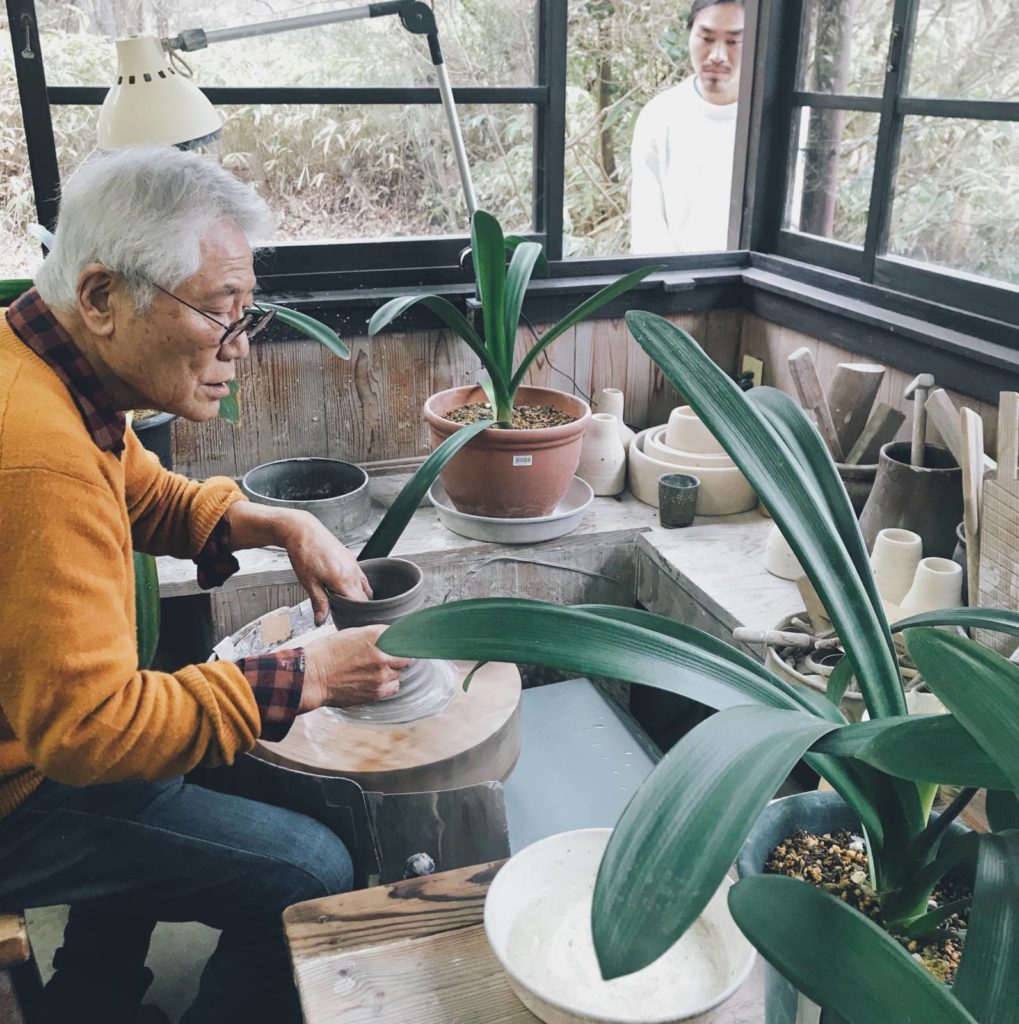This year, I spent my spring break traveling around Japan with my art history seminar course, ART 429 Visual Japan: Past and Present. It was an absolutely transformative experience, both academically and personally. I’m here to share a little bit about how I learned to use experiences to inspire research and find answers through reflection.
The course
The course I traveled with is an intimate art history seminar taught by professor Andrew Watsky on the visual history of Japan. In the course, we have studied the origins and effects of Japanese art practice, religion, and culture. We have closely analyzed Buddhist art, calligraphy, ceramics, and even tea!
At the beginning of the course, each student selected a topic under the theme of “visual Japan” to independently research throughout the semester. By the time we traveled to Japan, we had spent a couple weeks with our topic but were very much still in the process of understanding our topics and developing questions.
I personally was interested in studying the materiality of Japanese art and closely analyzing two mediums, ink and ceramics, to understand how texture and material may detract from or highlight authorship.
The trip

The trip was our time to experience an introduction to visual Japan. Through the organized activities our professor planned, we revisited the topics and places we had talked about in class, but the trip was also a chance for us to explore and spend time conducting our own research. During our allotted research breaks, students scattered the city to collect objects, buy books, visit temples, meet artists, and take classes!

Because I was interested in the materiality of ink, my professor arranged for me to attend two calligraphy and ink painting classes for two of my research sessions. Instead of just looking at ink and calligraphy, I got to actually paint myself and learn from talented, highly respected artists! Working with the materials allowed me to develop such a better appreciation and understanding of the works I had been studying.
A rising question
My topic of texture and materiality inspired me to closely observe any and every object we encountered in Japan. Additionally, I am studying design at Princeton so, throughout our travels, something I couldn’t help but notice was the different styles of graphic and information design in Japan. There seemed to be two distinct styles. There were advertisements, packages, and tickets that mirrored the minimalist, purposeful, and calm style of traditional Japanese art; however, there were also designs with anime characters and wild colors, decorations, and typographies. The contrast between the two to me is crazy. I kept asking myself: how did this contemporary visual language of saturated color, decoration, and personification evolve from the visual language shared by ink paintings, calligraphy, and ceramics?
It seemed as if a new research question was emerging. I talked to my professor about this new question, and I was almost apologetic when I asked him if I could shift my research topic. He told me that this was the point of the trip for our research to be inspired and affected by our experiences in the country. There are so many new curiosities that arise once you arrive in a place!
Reflection
The week after our trip, we spent our entire three hour class period just talking about the trip–the themes we noticed, experiences that stood out, our remaining questions, etc. It was through this group reflection that I started to find a connection between the two design styles I had noticed and that I found a way to apply my previous research topic to my new one.
Hearing reflections from my peers was so important. Their thoughts highlighted new connections and ideas for me. Now that I have a clear question and direction, I am excited to start getting into the deeper research and exploring different academic perspectives on what I experienced first hand over spring break.
Takeaways
In the end, I learned it is through first-person experiences that our curiosity can inspire such natural questions. There is really so much to explore so finding a topic will always be possible, but sometimes it takes immersing yourself in a topic or traveling to a new place to discover a question that really stands out to you. I think without traveling across the globe, students can ignite their curiosity through immersive experiences. For example, if you were Interested in researching a certain art genre, you could visit an art museum. If you were interested in studying criminal justice, you could get involved with Students for Prison Reform and Education Reform (SPEAR) or volunteer with Petey Greene. Through these experiences, questions will arise.
Check out Elise’s post about how her trip to France helped her in grounding her thesis research. Also, keep an eye out for classes with trips as you look through the course catalogue for next semesters course offerings!
Even if you can’t visit or witness your topic, you can immerse yourself in reading to create a background of understanding before developing a question. Then, it is through self-reflection, and also group discussion, that you can start to find direction in your research.
—Raya Ward, Natural Sciences Correspondent

